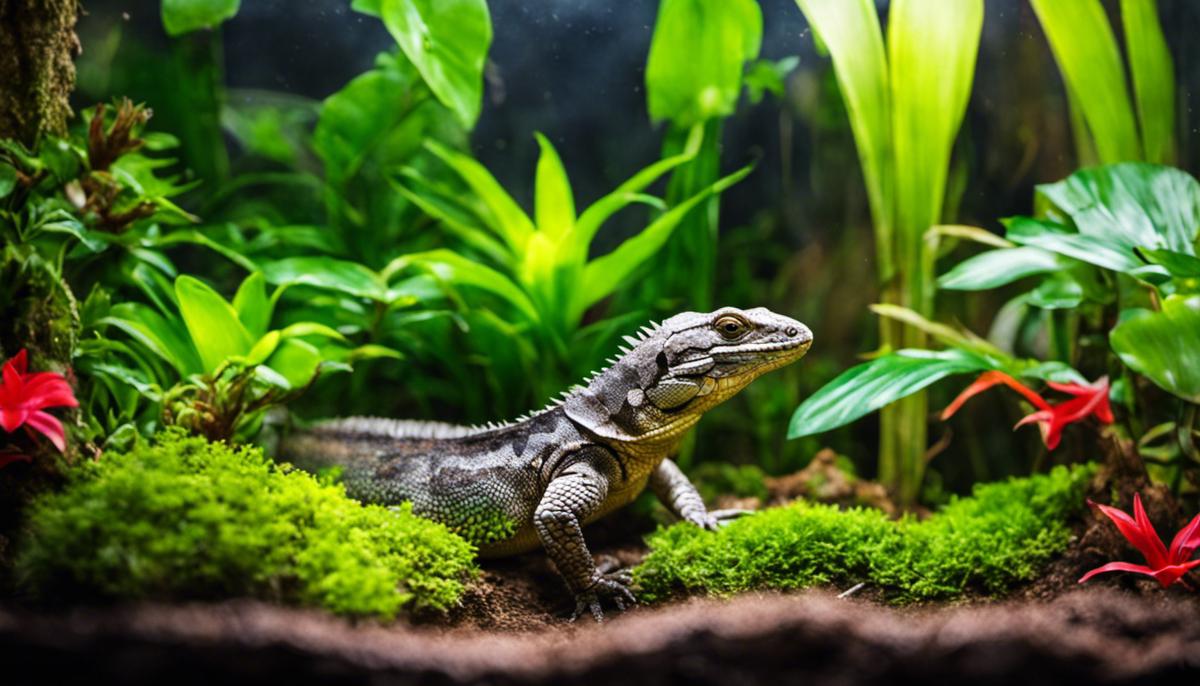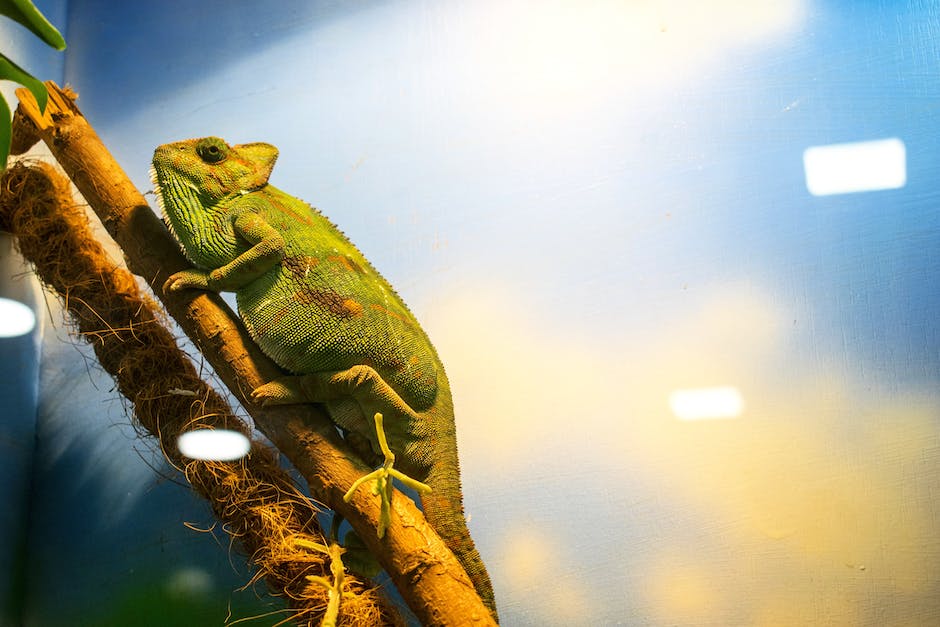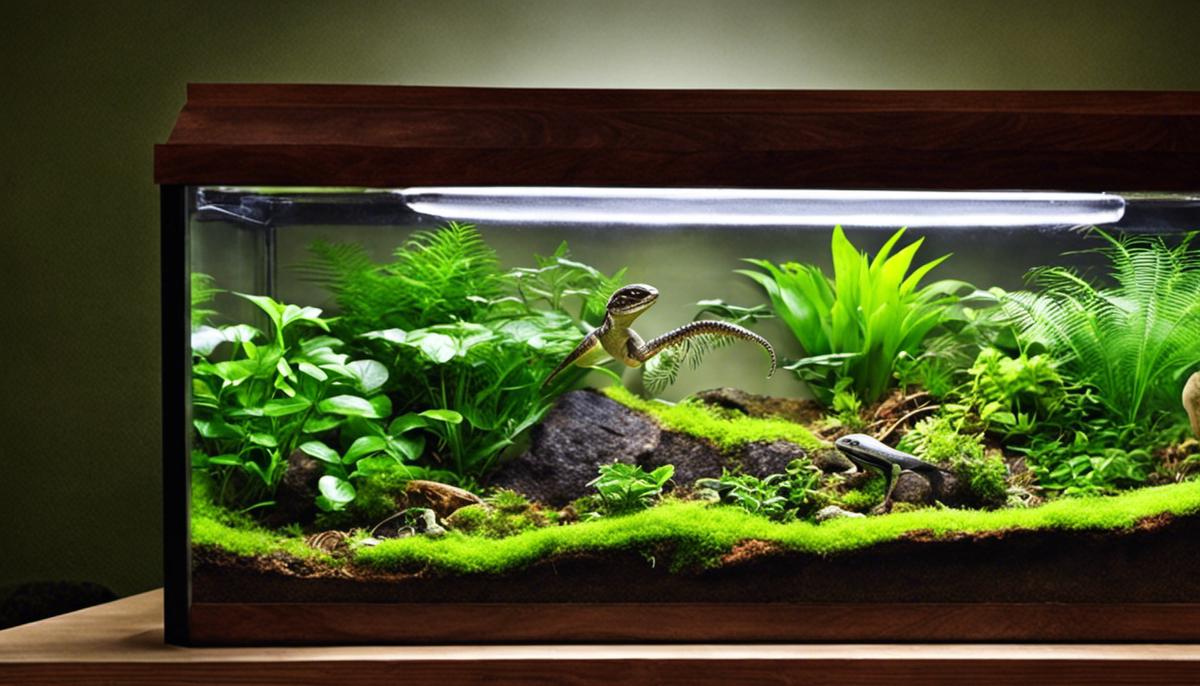Amateurs and seasoned reptile enthusiasts alike know that the commitment to pet reptiles goes beyond feeding and handling. One of the most crucial aspects of reptile care involves setting up an adequate and suitable home for these unique pets in the form of terrariums. A terrarium is more than just an enclosure: it is a carefully crafted ecosystem that caters to the specific needs and behaviors of each reptile species. The key to a successful reptile terrarium setup boils down to three main components – choosing the right terrarium, setting up an appropriate habitat, and controlling the temperature and lighting inside the terrarium. Within this discussion, you will discover applicable tips on creating a thriving living space for your pet to mimic its natural habitat as closely as possible.
Choosing the Right Terrarium
The world that opens up when you dip a toe into the tropical waters of herpetology is astonishingly vast, burgeoning with vibrant plants and fascinating creatures. For every reptile enthusiast, adorning your home with a slice of this tropical paradise can be an utterly enchanting venture. Now, you might be asking if a terrarium is an appropriate way to recreate this magic. The answer is a resounding “Yes!”
Before getting all giddy and rushing off to the nearest pet store, it’s essential to understand the deciding factors when choosing a terrarium for your reptilian friend. Remember, their comfort, wellbeing, and longevity ride heavily on their new habitat. So, here are some vital considerations to factor into your decision.
Firstly, and often most overlooked is the space. Different reptiles have different spatial needs, especially when fully grown. A Red-Eyed Tree Frog will require modest vertical space, whereas a fully grown Boa Constrictor could use a terrarium as large as a sizable piece of furniture. It’s paramount to consider the adult size of the reptile and plan your terrarium space accordingly.
Secondly, let’s talk about the material. Plastic or glass? Each has its pros and cons. Plastic is lightweight and doesn’t break easily, but glass has a timeless appeal and superior clarity. Series of research have suggested less stress and better thermoregulation in lizards housed in glass. So, though the decision is up to your personal preference, glass often wins the day when aesthetics and reptile comfort intersect.
Moving onto the type of terrarium, you can choose between tropical, desert, woodland or aqua-terrarium. Each replicates a specific environment. Tropical terrariums are ideal for reptiles such as Anoles and Chameleons which thrive in humid conditions, while desert terrariums suit Bearded Dragons and Leopard Geckos which prefer dry habitat. Woodland echoes moderate humidity levels and houses like Chinese Water Dragons, whereas Aqua-Terrariums serve for semi-aquatic reptiles like Terrapins.
Next, ventilation should be considered a priority for any terrarium setup. Adequate ventilation prevents humidity buildup, condensation, and─as a result─removes the threat of diseases caused by bacterial or fungal overgrowth. Brands like Exo Terra and Zoo Med provide well-ventilated terrarium models specially designed to safeguard your pet’s wellbeing.
Remember, when it comes to temperature, not all reptiles bask in the heat. Some thrive in cooler, moderate climates. Adjusting the terrarium temperature to mimic your pet’s natural habitat is vital. Maintaining an optimal temperature gradient by installing quality heat pads or lamps becomes indispensable here.
-

Beaded Dragon Fan Exclusive: ‘Original Hipster’ T-Shirt – Wear Your Unique Style with Pride – Unisex t-shirt
£13.00 – £20.50 Select options This product has multiple variants. The options may be chosen on the product page -

Chinese Water Dragon Aquatic Mastery Tee: Dive into Elegance with Our Exclusive Reptile Enthusiast Shirt – Unisex t-shirt
£13.00 – £20.50 Select options This product has multiple variants. The options may be chosen on the product page
Lastly, the terrarium must be escape-proof! Secure locking systems that are difficult for reptiles to manage is a need when you certainly don’t want your little friend to go on house exploration without your supervision!
By following these key considerations, you elevate the level of care you provide for your reptile. With a good understanding and careful execution, you can create a paradise, not just an enclosure, where your pet reptile lives in optimum comfort and contentment. Remember, their habitat is their world, so take your time to make it spectacular!

Appropriate Habitat Setup
Creating a habitat that mimics your reptile’s natural environment is not just about selecting the right terrarium. In-depth knowledge about the reptile’s natural habitat and incorporating that understanding into the simulated environment is key to your reptile’s health, well-being and longevity. Crafting the optimal habitat demonstrates how for a reptile enthusiast, it’s more than just a hobby—it’s a passion.
1. Understanding the Natural Environment
To create an accurate simulation of the natural habitat, understanding the distinctive features of the reptile’s wild environment is crucial. Does the reptile originate from a tropical rainforest with high humidity and leaf cover, or an arid desert with dry, sandy conditions? Understand the terrain, vegetation, and climate your reptile is naturally adapted to and replicate those conditions as closely as possible.
2. Substrate Selection
Substrate, or the base-layer material in the terrarium, should closely mimic your reptile’s natural environment. For desert dwellers, a combination of sand and stone could be ideal while a forest dweller might prefer peat and bark. Be cautious, certain substrates can cause impaction if ingested, so it’s pertinent to do thorough research.
3. Recreating Climate
Maintaining the right temperature gradient, humidity levels, and exposure to natural sunlight or UV lighting mimics the sun’s benefits in the wild. For species that rely on basking, a suitable heat lamp is mandatory. Humidity can be regulated with the help of misters, foggers, or by simply manually spraying water into the tank.
4. Landscaping and Shelter
Landscaping within the terrarium should mirror the reptile’s wild habitat. Arrange rocks, branches, and plants to offer diverse climbing and hiding opportunities. Positioning these elements strategically aids in simulating various environmental features such as caves, burrows, and sunny basking spots. Plants—either artificial or live ones—contribute to create a more natural atmosphere. Live plants have an added benefit—they also help to maintain humidity.
5. Water Sources
Dependent on the species, you may need to provide a water bowl large enough for the reptile to bathe in, a flowing water source, or a simple dish to offer hydration. Always provide clean, treated water to prevent harming your pet.
6. Inclusion of Live Prey
Including live prey in the terrarium helps recreate the foraging or hunting experience. This satisfies the reptile’s predatory instincts and contributes to a more enriched environment.
However, creating a habitat that replicates the natural environment of your reptile shouldn’t compromise its safety—careful screening of plants, substrates, and prey for toxins is paramount. After all, a true hobbyist understands that the patience and diligence invested into creating a perfect environment reaps rewards in the form of a happy, healthy, and thriving reptile.

Temperature and Lighting Control
In diving further into the fascinating world of reptile terrariums, two essential elements to focus on are temperature and lighting. These two factors are the keys to maintaining a healthy environment for these scaly friends, given their significant influence on crucial biological functions such as metabolism, growth, and overall well-being.
In terms of temperature, it’s crucial to remember that unlike most mammals, reptiles are unable to regulate their body temperature and hence rely heavily on their environment. Thus, creating a temperature gradient within the terrarium can mimic a reptile’s natural environment. The gradient allows them to move freely between warmer and cooler areas, giving them the freedom to self-regulate their body temperature.
The ideal temperature for most reptiles is between 70 and 85 degrees Fahrenheit during the day and a drop of about 5-10 degrees at night, mimicking natural day-night patterns. Of course, these numbers may vary based on species. Herpetologists often recommend having two thermometers at each end of the terrarium to monitor the temperature range accurately.
Moving on to lighting, reptiles need exposure to ultraviolet (UV) light for their bone health and wellbeing – namely, UVA and UVB rays. UVA stimulates regular behavioral patterns, while UVB allows for the synthesis of vitamin D3, aiding in calcium absorption. The best source of UV light is natural sunlight, but it’s not always practically possible to provide this. Luckily, your local pet store should have a variety of UV lamps to choose from, which can simulate this spectrum of light.
Try to follow a 12-hour light, 12-hour dark cycle to mimic the natural rhythm, ensuring they get unsaturared rest. Remember, the UV light source should be placed at a proper distance from the reptile to avoid causing burns or blindness.
Finally, a quick tip about managing both temperature and lighting: make sure to place the heat source close to the UV source. The rationale? Reptiles will naturally move towards the warmth and will therefore also be exposed to the necessary UV light.
The science involved in reptile care definitely makes it an engaging and fulfilling pastime. The satisfaction that comes from creating a conducive environment and observing your reptile buddy thriving in it is incomparable. Here’s to a heated, well-lit, and happy terrarium!

Caring for reptiles is a rewarding journey of continual learning. The right terrarium setup not only ensures the health and happiness of your pet reptile, but also makes for an enriching viewing experience for you as a reptile parent. It serves as a reminder of the marvels of nature and the diverse animal behaviors that can be exhibited within a controlled environment. Throughout this narrative, we hope you have realized the importance of everything from careful terrarium selection to meticulous temperature, lighting, and habitat control. We encourage you to use this information to create a comfortable, safe, and engaging environment for your reptile to live in, and subsequently, witness the pleasurable aspects of watching your pet prosper within it.

